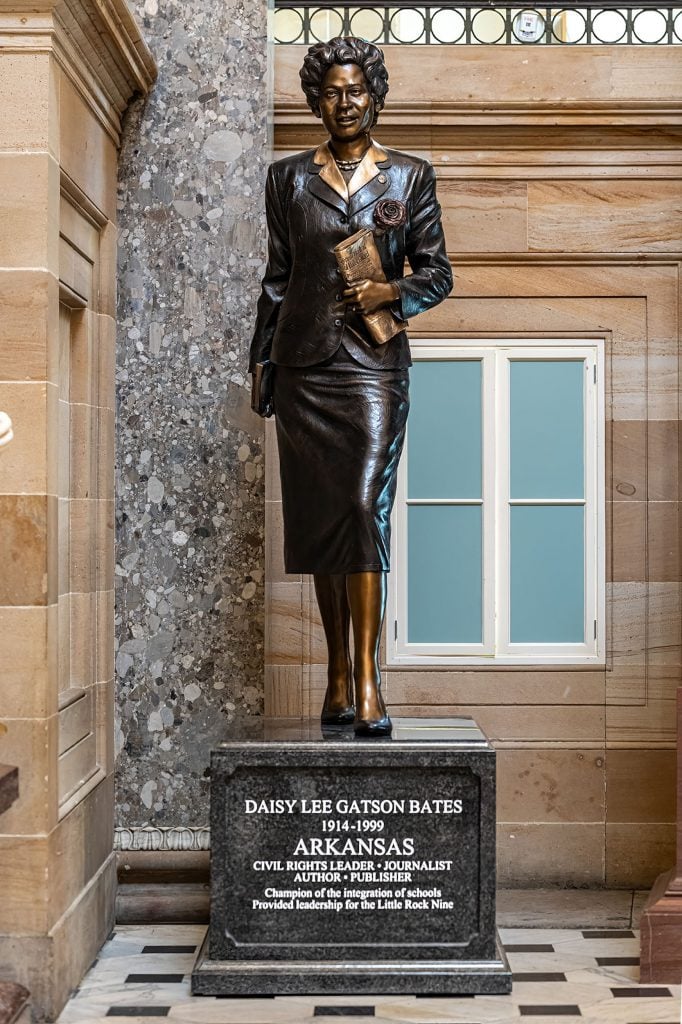Art World
Johnny Cash Is Getting a Larger-Than-Life Statue on Capitol Hill
Cash is the first musician to be immortalized in the National Statuary Hall.

In life, Johnny Cash sang of being a natural, actual, real, authentic, Arkansas-loving man. Twenty-one years on from his death, the singer-songwriter’s home state will return the love by placing a bronze statue of Cash in Washington, D.C.’s National Statuary Hall.
House Speaker Mike Johnson and Democratic leader Hakeem Jeffries announced that the unveiling is set to take place on September 24. Each U.S. state places two statues that represent notable figures from its history on Capitol Hill and in 2019, the legislature of Arkansas passed a bill to replace its existing statues.
The eight-foot-tall work was made by Kevin Kresse, a sculptor and native Arkansan. It uses local limestone for its pedestal and depicts the Man in Black, his head bowed in humility, holding a bible in one hand and a guitar—the Martin D-35—slung over his shoulder.
View this post on Instagram
“I’m truly honored to have been chosen to sculpt Johnny Cash for the US Capitol in D.C.,” said Kresse. “Proud to be a native son, representing an Arkansas icon and personal hero in this project.”
Born in Kingsland, a town 60 miles from Little Rock, Cash was one of the most successful and iconic musicians of his generation. Applying his deep baritone and vernacular lyricism to country, blues, and rock, Cash sold more than 90 million records over a five-decade career and was inducted into both the country and rock and roll halls of fame. His boyhood home was added to the National Register of Historic Places in 2018 and is open to the public, as is his Tennessee ranch.
Cash is the first professional musician to receive a statue in Statuary Hall. Arkansas Governor Asa Hutchinson believes he is a fitting choice. “Cash represents our music heritage, he represents the struggles that we had as a state back in the ‘30s,” Hutchinson said. “His music came out of the soil of Arkansas.”
Cash’s statue is the second recent change to Arkansas’s representation inside National Statuary Hall. On May 8, a statue of Daisy Bates, a civil rights leader who headed the state’s NAACP chapter, was unveiled. Bates was one of nine students who integrated Little Rock Central High School in 1957 in a challenge to racial segregation in the city’s public schools. She later campaigned for voter registration and anti-poverty programs. Bates’s statue was made by Benjamin Victor, a sculptor with three other works on the Capitol, the most of any living artist.

Benjamin Victor, Daisy Lee Gatson Bates (2024). Courtesy the Architect of the Capitol.
The two statues replace those of Uriah Rose, a 19th-century lawyer, and James P. Clarke, a former governor and U.S. senator around the turn of the 20th century. Both statues had drawn criticism for representing figures whose ideologies were out of step with contemporary values.
“Both of those individuals are not ones that mean anything to contemporary Americans,” Hutchinson told NPR in May. “And of course, if you dig deep into their history, they do have a racist history that is not reflective at all of Arkansas.”





